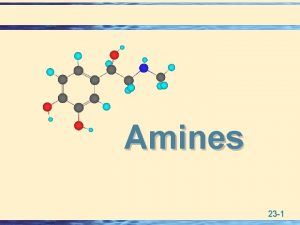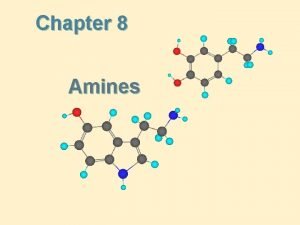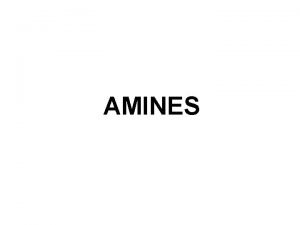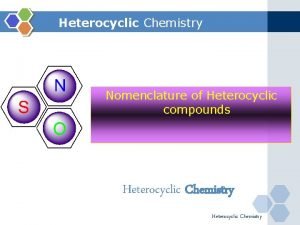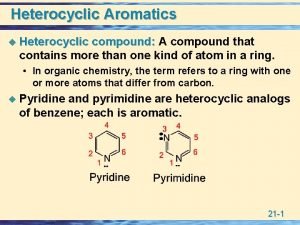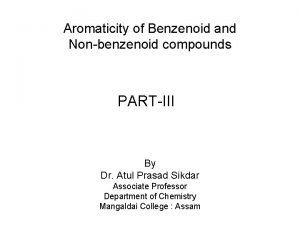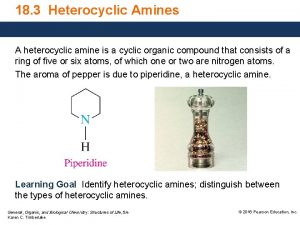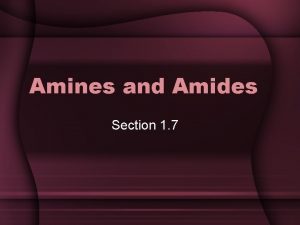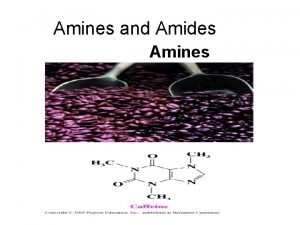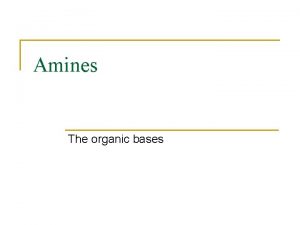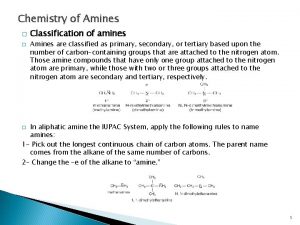18 3 Heterocyclic Amines A heterocyclic amine is









- Slides: 9

18. 3 Heterocyclic Amines A heterocyclic amine is a cyclic organic compound that consists of a ring of five or six atoms, of which one or two are nitrogen atoms. The aroma of pepper is due to piperidine, a heterocyclic amine. Learning Goal Identify heterocyclic amines; distinguish between the types of heterocyclic amines. General, Organic, and Biological Chemistry: Structures of Life, 5/e Karen C. Timberlake © 2016 Pearson Education, Inc.

Heterocyclic Amines, Five-atom Rings Of the five-atom rings, • the simplest one is pyrrolidine, which is a ring of four carbon atoms and one nitrogen atom, all with single bonds. • pyrrole is a five-atom ring with one nitrogen atom and two double bonds. • imidazole is a five-atom ring that contains two nitrogen atoms. General, Organic, and Biological Chemistry: Structures of Life, 5/e Karen C. Timberlake © 2016 Pearson Education, Inc.

Heterocyclic Amines, Six-atom Rings Of the six-atom rings, • piperidine, responsible for the pungent aroma and taste of black pepper, is a six-atom heterocyclic ring with a nitrogen atom. • purine and pyrimidine rings are found in DNA and RNA. In purine, the structures of six-atom pyrimidine and five-atom imidazole are combined. General, Organic, and Biological Chemistry: Structures of Life, 5/e Karen C. Timberlake © 2016 Pearson Education, Inc.

Chemistry Link to Health: Alkaloids: Amines in Plants Alkaloids are • physiologically active compounds produced by plants that contain heterocyclic amines. • used in anesthetics, in antidepressants, and as stimulants, and many are habit forming. Nicotine, an alkaloid, is a stimulant that increases the level of adrenaline in the blood, increases the heart rate, and increases blood pressure. Nicotine is addictive because it activates pleasure centers in the brain. General, Organic, and Biological Chemistry: Structures of Life, 5/e Karen C. Timberlake © 2016 Pearson Education, Inc.

Chemistry Link to Health: Alkaloids: Amines in Plants Caffeine • is an alkaloid found in coffee beans, tea, chocolate, and soft drinks. • is a stimulant of the central nervous system. • increases alertness but may cause insomnia. General, Organic, and Biological Chemistry: Structures of Life, 5/e Karen C. Timberlake © 2016 Pearson Education, Inc.

Chemistry Link to Health: Alkaloids: Amines in Plants Morphine and codeine are • alkaloids obtained from the oriental poppy plant. • used as painkillers and in cough syrups. General, Organic, and Biological Chemistry: Structures of Life, 5/e Karen C. Timberlake © 2016 Pearson Education, Inc.

Chemistry Link to Health: Alkaloids: Amines in Plants • Heroin, obtained by a chemical modification of morphine, is strongly addictive and is not used medically. • The prescription drug Oxy. Contin (oxycodone) is used to relieve severe pain. Its structure is similar to that of heroin. General, Organic, and Biological Chemistry: Structures of Life, 5/e Karen C. Timberlake © 2016 Pearson Education, Inc.

Study Check Identify the heterocyclic amines in the following: A. B. General, Organic, and Biological Chemistry: Structures of Life, 5/e Karen C. Timberlake C. D. © 2016 Pearson Education, Inc.

Study Check Identify the heterocyclic amines in the following: A. B. C. D. A, B, and C are heterocyclic amines; D is not. General, Organic, and Biological Chemistry: Structures of Life, 5/e Karen C. Timberlake © 2016 Pearson Education, Inc.
